#Understanding Dog Body Language - Learn how to read dogs behavior better
Explore tagged Tumblr posts
Text
(Homo robotumus)
what makes me.. me?
____________
we all know the story.
i punched in my ticket in another life, so i ended up here.
an absolute flip flop of my previous life, so different from him in every way that im only recognizable if i act out and fall back on bad behavior.
but i assure you, I'm still him.
in every aspect of my soul filled being, i am that man.
through every attempt to categorize myself in one way, a way i told everyone that it would be my last - was i lying or was i so unsure that i needed to force it?
i wish not to confirm but to explain life like this.
run down.
i have a human spirit, i was born with human functions and human physiological parts. I am, by all means, human.
taxonomically though, i am not homo sapiens. i don't believe in linnaeus' racial dividing of homo sapiens and no longer think that homo ferus and homo monstrous really do much for our society given that we have evolved quite past that.
since he has removed any responsibility over defining what strictly is human or not before and after his death, it is the responsibility of the people labeled as such to choose their own biology and to be alive with their own terms. this is, fundamentally, taxonomical anarchy.
so, ive taken it upon myself to divide myself, a human, into a new category of human. homo robotumus.
you may be thinking, "just say android/gynoid, just say cyborg, or drone." all of those mean different things and also - im not any of those.
i am a robotic human. humanoid fits better but human is referring to the "homo" part.
i am completely human in this case. i am robotic though, in who i am and what i believe and how i do things and how i function every single day. receive tasks, do tasks, finish tasks, clean up, over and over, and i feel like it's not just my environment - it is just me as a being that is robotic because i do not have to perform in this order and i do not have to split up my time and my brain and my ideas like this. i can choose to step out the box, i have human free will, but it feels like i am going against my instinctual coding.
so, you may also ask, "have you checked if you're on the spectrum?" yes, and i have a bit of a firm belief that i am not and have only used that in the past because i was afraid of explaining having fantasy-prone personality, something that gets you sidelined as the ""schizo"" freak loner bc i was plural, suffering similar fates with socially awkward people who are deemed unworthy (the climate in my school years were "friendlier" to autistic folk (infantilization mostly) than people who just "were weird by choice", which... no it was never a choice.)
so no, the robotic feeling doesn't come from external factors but just how i am hardwired. if i was in the wild, I'd probably do the same, to me this is instinct. i can lose track of time but that doesn't mean i am completely lost. if time didn't exist for me, I'd use the sun and weather. those are all things that tell the functions of the world and i can read them.
i cannot speak for every human here, but i can say that i started to embrace more of that robotic nature - not as a mindless drone - or a cyborg - but as a person. allowing myself to shift into different language, to learn new things, and to feel complete when this body is entirely warm flesh.
i am not like other robotics. i am human. interaction with tech and seeing how they build them, i am lost. i have loved technology since i was born. i have always been interested in learning and understanding how wires fling and how parts come undone, and have been building and reconstructing things my entire life. coding though? i am not confident in it. it is like making another life form, or an aspect of one. the furthest i got was Scratch in middle school. the innerworkings are like seeing gore.
i used to watch videos of robot meetups, humans bringing their robot dogs and furbies and all this technology together interacting in one spot. i understood it as hard cold metal loved by tough warm flesh. i have tough warm flesh, and on the inside, i have blood and organs. how could i ever be robotic?
in order to perform tasks i need direct and straightforward directions with details. inside me, i have a brain and a nervous system - they are not wires. i have low memory, so i may forget more than i store, but visually.. i can pick up and see anything. i can recognize and store information based on visual cues and no amount of imported information will ever be stored in this brain of mine.
that's how i know i am not like other robotics. i am not robotkin, i am not a robot.
and though i am human, i am not like the rest of them. maybe you feel the same. they'll treat you like you're just like them because humans will do that for anyone. i am human like the rest of them, but i am not homo sapiens.
so. what is it? what makes me.. me? and before you say what makes me.. me is the definition i have given myself, i have not fully defined homo robotumus and will not be able to for some time but i do wish to say one more thing about how and why i split myself from homo sapiens.
it's instincts.
one thing that humans rarely showcase beyond emotional attachment, is instinct. they suck them behind their emotions so that fear and anger are deemed "instincts" rather than responses to their environment. no, an instinct is something deeply engraved before birth that the body knows what to do before the mind does it. it is an action, not a feeling.
a baby swimming in water is instinct. a man shouting about a fire is not instinct. one of these is a response to distress.
and my robotic nature, that is instinct. i was not taught to be robotic, i was not taught to do things by myself or others, i do them because i feel oddly uncomfortable if i do not. my eyes take perfect photos of things and i feel inclined to remember them. if i had a choice, i wouldn't engage in this feeling of robotic nature, just to see how humans do it for a day - but i don't have that choice - because hotwired in the back of my spine are instincts of a robot given to me by my own biology.
instinctual non/human - maybe - is a term I'll use in reference to this phenomenon. where i am my whole self without borders. i am flat and i am blunt and i am honest but i can crack a smile and a laugh because i am human but instinctually nonhuman.
#physical nonhuman#deviæ#transhumanism#robotkin#techkin#holothere#transspecies#physical shifter#pshifter
12 notes
·
View notes
Note
Any tips on raising animals, specifically dogs? Just had a puppy today and named it after Frigus lol.
Long paragraphs below, hiding under a readmore. Also I absolutely love that. There's a real freakin' Frigus out there..... wow...
There's a lot of common sense things you could probably easily find online, but something that I think is always very swept under the rug is pure consistency. That goes with any animal. An animal is not going to be able to learn to be comfortable around you, if it doesn't know what to expect.
If you are tipping your toes around trying to avoid scaring a flighty dog all the time, you best be prepared to do that the entire time you own them because that is what they will learn to work with. Otherwise when you try acting normally, it will confuse and stress them out. If you just behave as you will from the start, not compromising your way of life for the sake of your pet, they will adapt and be happier for it, understanding you at your most you, knowing what to expect.
I grew up around a lot of dogs, big and small. Cats too. My first real pets I raised myself were chickens, ducks, and geese. I have a rescue dog now too. Chickens become very flighty of you and any other human if you don't hang around them enough, touch them, hand feed them. Bother them all their life, they get used to it and sometimes even learn to love it. At the very least they grow up to tolerate it enough for me to be able to look at them when they are hurt. They know what to expect from me, after all.
My geese become agitated around other people, because those people (understandably!) clam up and act awkwardly. They change and stiffen their body language. If there is anything I've learned from my geese it'd be to never waver. Don't aggress, of course, but a lot of animals in the pet world have different levels of "how much can I get away with?". Geese have very high levels, and the second you let them know they've scared you, they take fullll advantage of that. They like to have fun bothering things if they can get away with it. So being consistent in your body language is key. And I'm not going to work around the lot constantly being stiff. I'm going to walk like me, and they understand that because I've never done anything different.
Dogs, for instance, may see you giving into their stubbornness every now and then-- they are sitting down when you don't walk they way they want to walk, so you end up going they way they want, for instance-- and double down each time you try to correct this behavior. If they know they've gotten away with it in the past, they will probably be able to get away with it again. It can be awkward, or boring, but if you're consistent about not giving in (or at least not rewarding them in any way if you can't get them to behave), they won't know that the probability exists to begin with.
Other than that... respect boundaries. Learn their body language in turn. A lot of sites will tell you what to look for in dogs in terms of fear, stress, early aggression, body tension, whatever. They're good starter points, but every dog is different. Every animal is different. Some are easier to read than others, and some tolerate things better than others. Some have different histories and backgrounds and past experiences that shape their reactions. You have a puppy so hopefully this part won't apply to you. But some dogs, they'll show those whites under their eyes even if they aren't stressed. Some dogs are growly but they don't mean it in an aggressive way. Like I said, it can be hard to correctly read some dogs until you get to know them.
Always familiarize and reinforce handling them-- if you want your dog to like pets as an adult, of course you always reinforce petting as a puppy! That mindset goes for everything you want your dog to tolerate you doing in the future, but sometimes dogs also just don't like certain things, and if your dog ends up hating their paws played with no matter how much you've tried, you shouldn't do it more than necessary if you can tell it stresses them out. Or you try and make it fun, which can work (as long as you're consistent, which is basically the theme of this ask at this point)... but it still might not always help. Depends on their temperment. It's good to try offering treats and other fun stuff while enforcing behaviors that are a little scary or stressful for a dog, to see if it helps. But if it doesnt, just learn to respect them if you can't buy their tolerance, lol.
And also if your puppy is a purebreed of anything, I hope you read up on their energy levels and temperments and proper coat care and the like, and that you're prepared to match those needs. It's too sad seeing people get border collies or other high energy dogs, but they live in an apartment or they never give them anything to occupy themselves with. It's sad to see very busy people getting breeds that thrive best in human company. Sad to see dogs with high maintenance coats being neglected the amount of time and care they need.
Okay okay okay very wordy I'll end it here, but those are just things I always wish more pet owners practiced and considered. 🪿🖤
#as long as you respect your pet and be yourself around them#they will be able to respect you and be themselves in turn#i literally could have just said that to be honest and it would've probably had the same impact#but whatever#you probably asked me because i type for ages anyways >:3#i assume anyone who asks me stuff expects essays at this point lmao
21 notes
·
View notes
Text
The Ultimate Guide to Cat Training.
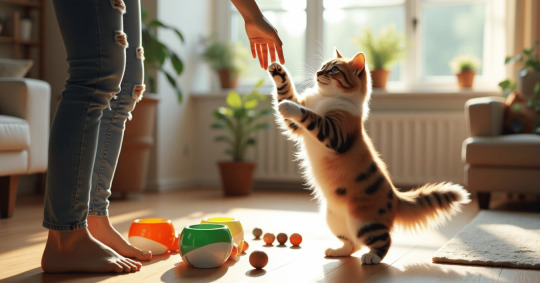
Introduction to Cat Training
Training your cat might sound like a mission impossible, but trust me, it's not. You don't need magic—just patience, consistency, and the right techniques. Whether you’re tired of your feline scratching the furniture or dreaming of teaching them cool tricks, this guide has you covered.
Why Train a Cat?
You train dogs, right? So why not cats? Contrary to popular belief, cats are highly trainable. Training strengthens the bond between you and your pet, reduces behavioral problems, and makes life easier (and cleaner).
Common Misconceptions About Cat Training
People often say, “You can’t train a cat.” Well, guess what? That’s just a myth. Cats aren't stubborn—they’re independent thinkers. The trick is figuring out what motivates them.
Understanding Your Cat’s Behavior
Feline Psychology Basics
Before jumping into cat training, take a minute to understand how your cat thinks. Cats are driven by curiosity and rewards. They’re territorial and creatures of habit. If you get this, you’re already halfway there.
Reading Your Cat’s Body Language
Tail flicking, ear twitching, slow blinking—it all means something. Learning to read your cat’s signals helps you communicate better and train more effectively.
Getting Started with Cat Training
What You Need Before You Begin
You'll need:
Treats (small, soft, and smelly work best)
A clicker (optional but helpful)
A quiet space
Patience (lots of it)
If you’re looking for step-by-step beginner strategies, these simple cat training tips every owner can use can give you a great head start alongside this guide.
Choosing the Right Time and Place
Train when your cat is alert but not overexcited—after a nap or before dinner is ideal. Keep sessions short (5–10 minutes) and distraction-free.
Basic Cat Training Techniques
Using Positive Reinforcement
Cats respond best to rewards. When your kitty does something right, give them a treat or a cuddle. No yelling, no punishment—it just doesn’t work. Check out this helpful breakdown of simple training techniques that really work.
Clicker Training for Cats
Clicker training uses a small sound (the click) to mark the exact moment your cat performs the desired behavior. Pair the click with a treat, and you’ve got a powerful training combo.
Treats and Rewards – What Works Best?
Every cat is different. Some love tuna, others go nuts for freeze-dried chicken. Test a few options and find what makes your cat purr with excitement.
Training Your Cat to Use the Litter Box
Litter Box Placement
Privacy is key. Place the box in a quiet, accessible area. Avoid busy spots or noisy appliances.
Dealing with Accidents
Don’t punish your cat. Clean the area with an enzyme cleaner and try to understand why the accident happened—dirty litter, stress, or health issues could be the cause.
Teaching Your Cat to Come When Called
Step-by-Step Training
Say your cat’s name in a cheerful tone.
Immediately offer a treat when they look at or approach you.
Repeat regularly in short sessions.
Making Recall Fun and Effective
Use treats, toys, or even mealtime to make coming to you the best part of their day.
Training Your Cat to Stay Off Counters
Deterrents and Alternatives
Use aluminum foil or double-sided tape on countertops. Meanwhile, provide alternatives like a cat tree or window perch.
Reinforcing the Right Behavior
Reward your cat when they choose their own space over the forbidden one. Positive attention works wonders.
Leash Training Your Cat
Choosing a Harness
Get a snug, escape-proof harness. Try it on indoors before taking your cat outside.
Getting Comfortable with Outdoor Walks
Start with short, supervised trips in the backyard. Let your cat lead. Never force it—they’ll come around if you’re patient.
Training Cats Not to Scratch Furniture
Providing Alternatives
Scratching posts, cardboard pads, or sisal-covered poles are great alternatives. Place them near areas your cat likes to scratch.
Redirecting Unwanted Scratching
If you catch your cat scratching the couch, gently redirect them to the post and reward them when they use it.
Socializing Your Cat
Introducing Cats to New People
Give your cat space and let them approach new people on their terms. Use treats to build trust.
Multi-Cat Household Tips
Have enough resources—litter boxes, food bowls, beds—for each cat. Introduce them slowly using scent swaps and short meetings.
Advanced Tricks and Fun Training Ideas
High-Five and Sit Commands
Use treats and a clicker. Gently guide your cat’s paw into a high-five position or lure them into a sit using a treat. Click and reward.
Playing Fetch with Your Cat
Some cats naturally fetch! Start with a favorite toy, toss it, and reward them when they bring it back.
Common Cat Training Mistakes to Avoid
Punishment vs. Positive Discipline
Never yell or hit your cat. It breaks trust and doesn’t teach anything useful. Redirect and reward instead.
Consistency is Key
Cats thrive on routine. Train regularly, use the same cues, and be patient.
Training Senior Cats vs. Kittens
Challenges and Benefits by Age
Kittens are curious and energetic—great for learning. Seniors may take longer, but can still learn with the right motivation.
Training kittens is like teaching toddlers—they're curious, fast learners, and always full of energy. Senior cats, on the other hand, may take more time but are just as capable. With the right methods and lots of patience, both young and old felines can benefit from structured training. If you’re unsure how to begin with an older cat, this article offers beginner-friendly advice that applies across all age groups.
Patience and Adaptation
Go at your cat’s pace. Some days they’ll be stars, other days not so much. That’s okay—keep it fun.
Tools and Resources for Cat Training
Recommended Books and Apps
The Trainable Cat by John Bradshaw
Apps like “Cat Training Tips” for daily reminders and guidance
Toys That Encourage Training
Interactive toys, feather wands, and food puzzles are not just fun—they build skills and reduce boredom.
Conclusion
Cat training isn’t just possible—it’s rewarding, fun, and makes for a happier household. The key? Think like a cat. Use what they love to guide them toward better behavior, one purr at a time. With patience, consistency, and a little humor, you and your feline can learn together. Ready to start training? Go grab those treats and let’s go!
#cat training#how to train a cat#smart cats#clicker training#positive reinforcement#pet training tips#cat lovers#cat behavior#feline friendly#indoor cat life#pet parent#kitten training#trained cat#cat blog#cat life#pawsnpup
1 note
·
View note
Text
Why Are Dogs the Cutest and Most Loyal Companions We’ll Ever Have?

Dogs have stood with us for thousands of years, and it's simple to understand why. With their ears that flail, their wagging tails, and their emotive eyes, dogs effortlessly steal our hearts. But their charm goes well beyond their appearance. **Dogs are faithful, affectionate, and incredibly intuitive animals** who can make our worst days a little better and turn plain moments into something remarkable.
In this article, we honor everything that makes dogs not only cute but also the most loyal buddies a human could ask for.
**What Makes Dogs So Incredibly Cute?**
From their puppy days until their golden years, dogs have a strange, almost supernatural gift for melting hearts. Their cuteness isn't subjective—it's scientifically proven. Here's why:
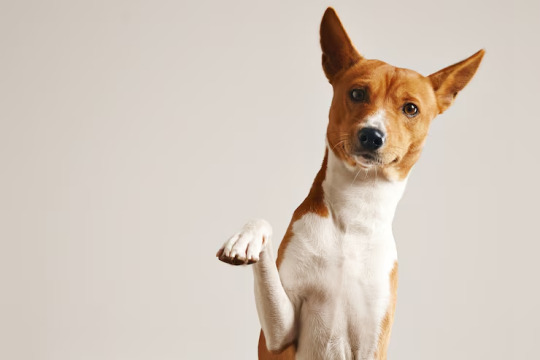
1. **Facial Features That Trigger Nurturing Instincts**
Dogs possess big eyes, round faces, and tiny noses—features that humans are biologically predisposed to find cute (referred to as "baby schema"). These characteristics trigger a nurturing response, causing us to want to care for and love them.
2. **Playful Behavior**
Whether they're running around in circles, bounding around the yard, or soliciting a belly rub, dogs are irresistibly charming. Their goofy behavior and pure joy are just some of the reasons they're so wonderful.
3. **Communicative Eyes and Ears**
Dogs don't require words—they speak volumes through body language. A cock of the head, an inquiring look, or bouncy tail can convey more than an entire paragraph.
4. **Unique Breed Traits**
From the little teacup Chihuahua to the large, fluffy Samoyed, each dog breed has its own special brand of charm. Their varied sizes, colors, and personalities ensure there's a dog for every kind of person.
**Why Dogs Are the Ultimate Companions**
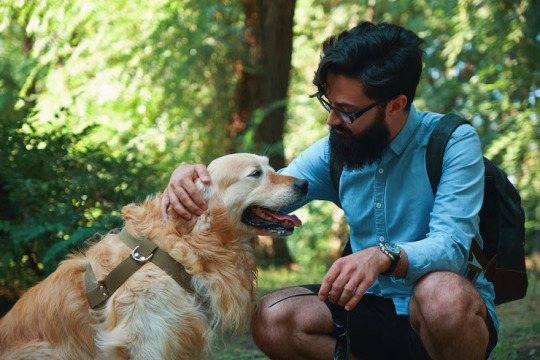
1. **Unwavering Loyalty**
Dogs possess a remarkable capacity to connect with humans. If you've gained the trust of a dog, they'll stick with you thick and thin—protecting your house, cheering you up when you're feeling down, and welcoming you like a hero whenever you come home.
2. **Emotional Intelligence**
Dogs are experts at reading emotional cues. They can detect stress, sadness, and even illness. No wonder therapy dogs are employed to assist with mental health and healing—they provide solace in ways words cannot.
3. **Encourage Active Lifestyles**
From daily strolls to backyard explorations, dogs encourage us to get moving. Life with a dog tends to involve more time spent outdoors, exercise, and social contact—all pluses for mind and body.
4. **Fight Loneliness**
For singles or those experiencing a difficult situation, a dog provides companionship, routine, and affection. Their presence alone can turn a house into a warm, living place.
5. **Teach Responsibility and Patience**
Taking care of a dog teaches us to be responsible, compassionate, and patient. They depend on us for everything—food, shelter, play, and affection—creating a deep, meaningful bond.
**Real-Life Moments That Show Why Dogs Are the Best**
* A Labrador cuddling up with a toddler during naptime.
* A rescue dog not leaving its owner's hospital bedside.
* A golden retriever sitting by the window each day until their human returns home.
* An older dog softly bumps its owner's hand when sad.
These aren't tales—they're daily reminders of how much dogs love their people.
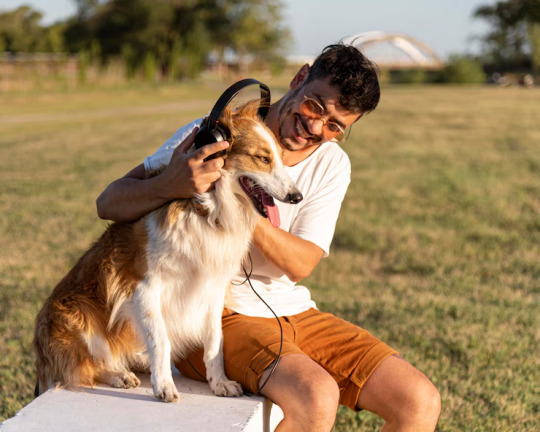
Celebrate Your Dog's Love
* **Share quality time** with them—walks, playtime, and snuggles all qualify.
* **Groom and care** for them daily to keep them healthy and smiling.
* **Train and communicate** clearly—dogs love to learn and please.
* **Capture their moments** with photos, journals, or videos to preserve memories.
* **Treat them** with safe toys, nutritious food, and lots of affection.
Conclusion
Dogs are not just pets—they are part of the family. Their unbeatable cuteness brings us joy, but it's their loyalty, emotional support, and constant companionship that truly make them special. Whether they're snuggling up next to us on a rainy day or leaping into our arms after a long absence, **dogs show us what unconditional love actually looks like**.
Want to give your dog the care and attention they need? Check out Petsfolio to learn about grooming, training, and in-home care services that prioritize your pup's joy.
0 notes
Text
From Barking to Biting: Addressing Common Dog Behavior Issues

Understanding Dog Behavior: Why It Matters
Dogs are wonderful companions, but just like humans, they can sometimes exhibit behaviors that leave us scratching our heads. Whether it's excessive barking, sudden aggression, or destructive chewing, every dog owner has faced a few puzzling moments. Understanding the root of these behaviors is essential for building a stronger bond with your furry friend and creating a harmonious living environment.
Behavior issues in dogs are rarely about being "bad." More often than not, they’re trying to communicate something—stress, boredom, fear, or even medical discomfort. By learning to read these signs and respond appropriately, you can help guide your dog towards better habits and a more relaxed, happy life.
When it comes to Dog Behavior, it's all about perspective. Dogs don’t think in terms of right or wrong—they act based on their instincts and the reinforcement they receive. So instead of getting frustrated, consider yourself a detective trying to understand the ‘why’ behind each action.
1. Excessive Barking: More Than Just Noise
Dogs bark—it’s their way of communicating. But when barking becomes constant and uncontrollable, it’s time to dig a little deeper. Common triggers include boredom, anxiety, territorial behavior, or the simple need for attention.
What you can do:
Identify the trigger: Is it the mail carrier? Other dogs? Loud noises?
Mental stimulation: Bored dogs bark more. Try puzzle toys or interactive games.
Training techniques: Use commands like "quiet" and reward silence.
Avoid yelling: It only adds to the noise and confusion.
Consistency and patience go a long way here. Over time, your dog will learn there’s no need to raise the alarm every time a squirrel runs by.
2. Chewing Everything in Sight
Puppies chew to explore the world and soothe teething pain, but when adult dogs turn your shoes and furniture into chew toys, it’s a cry for help.
Why it happens:
Boredom or lack of exercise
Separation anxiety
Poor diet or nutritional deficiencies
Lack of boundaries
Solutions to try:
Provide chew alternatives: Durable toys, frozen carrots, or rubber bones.
Supervised freedom: Confine your dog to a safe space when unsupervised.
Plenty of play and walks: A tired dog is less destructive.
Deterrent sprays: These can help discourage chewing on off-limit items.
Remember, scolding your dog after the fact won’t help—they won’t connect the punishment with the action. Instead, focus on prevention and positive reinforcement.
3. Jumping on People
While a dog jumping up might seem cute when they’re small, it can become problematic—or even dangerous—as they grow. This behavior is usually about excitement or seeking attention, not dominance.
Tips to stop jumping:
Ignore, don’t reward: Turn away and avoid eye contact when your dog jumps.
Teach an alternative: Train your dog to sit when greeting people.
Reinforce calm greetings: Reward calm behavior with treats or affection.
Be consistent: Everyone in the household needs to follow the same rules.
With repetition and consistency, your pup will learn that four paws on the ground equals more love and attention.
4. Aggression and Biting
Aggression can be frightening, especially when it escalates to biting. But this behavior often stems from fear, pain, or a lack of socialization—not meanness. Dogs might growl or bite as a last resort when they feel cornered or threatened.
Steps to address aggression:
Observe body language: Watch for warning signs like stiff posture, growling, or raised hackles.
Avoid punishment: It can increase fear and make aggression worse.
Socialization: Gradual exposure to people, animals, and new environments helps reduce fear-based reactions.
Professional help: In severe cases, consult a dog behaviorist.
The following video demonstrates how consistent and calm interactions can improve even the most challenging behavior:
youtube
5. Separation Anxiety: Not Just Missing You
If your dog goes into panic mode every time you leave—barking, whining, chewing, or even having accidents—they might be suffering from separation anxiety. This is more than just missing you; it’s a full-blown stress response.
Help ease the anxiety:
Start small: Practice leaving for short periods and gradually increase time away.
No big exits or entrances: Keep goodbyes and hellos calm and casual.
Comfort items: Leave behind a blanket, piece of clothing, or a toy.
Create a safe space: A cozy crate or room can help them feel secure.
Working through separation anxiety requires patience, but the relief and calm your dog will feel are worth every effort.
6. Digging: More Than Just a Mess
Digging is a natural behavior for dogs, but when your backyard starts to resemble a minefield, it's time to address the issue. Dogs dig for various reasons: to escape, to hunt, to cool off, or simply out of boredom.
Understanding the motivation:
Escape attempts: Dogs may dig under fences to explore or find companionship.
Hunting instincts: Some breeds have a strong prey drive and dig to chase burrowing animals.
Comfort seeking: Digging can create a cool spot to lie in during hot weather.
Entertainment: Without sufficient stimulation, dogs may dig to pass the time.
Strategies to curb digging:
Provide ample exercise: A tired dog is less likely to dig.
Designate a digging zone: Create a sandbox or specific area where digging is allowed.
Use deterrents: Place chicken wire or rocks in areas where digging is unwanted.
Address underlying issues: Ensure your dog isn't digging due to anxiety or separation stress.
By channeling your dog's digging behavior into acceptable outlets and addressing the root causes, you can protect your yard and keep your dog happy.
7. Leash Pulling: Teaching Polite Walks
Walking your dog should be a pleasant experience, but leash pulling can turn it into a tug-of-war. Dogs pull on the leash because they're excited, curious, or haven't been taught proper leash manners.
Why dogs pull:
Excitement: The outdoors is full of interesting sights and smells.
Lack of training: Dogs may not understand that pulling isn't acceptable.
Reinforcement: If pulling gets them where they want to go, they'll continue doing it.
Training techniques:
Stop-and-go method: Stop walking when your dog pulls, and resume only when the leash is slack.
Change direction: If your dog pulls, turn and walk the other way to teach them to pay attention.
Use rewards: Treats and praise can reinforce walking beside you without pulling.
Consistent practice: Regular, short training sessions can build good habits.
Patience and consistency are key. Over time, your dog will learn that walking calmly by your side is rewarding.
8. Inappropriate Elimination: House Training Challenges
Accidents in the house can be frustrating, but understanding the reasons behind inappropriate elimination is crucial. Puppies, newly adopted dogs, or even well-trained dogs can have accidents due to various factors.
Common causes:
Incomplete house training: Puppies need time and consistency to learn.
Medical issues: Urinary tract infections or other health problems can cause accidents.
Anxiety or stress: Changes in the environment or routine can lead to regression.
Marking behavior: Some dogs mark territory, especially in new surroundings.
Solutions:
Establish a routine: Regular feeding and potty times help set expectations.
Supervise closely: Keep an eye on your dog, especially during the training phase.
Positive reinforcement: Praise and reward your dog for eliminating outside.
Clean accidents thoroughly: Use enzymatic cleaners to remove odors and prevent repeat offenses.
With patience and a consistent approach, most dogs can overcome house training hurdles.
9. Resource Guarding: Protecting Valued Items
Resource guarding occurs when a dog becomes possessive over food, toys, or other items, displaying behaviors like growling or snapping when approached. This behavior stems from a fear of losing something valuable.
Identifying resource guarding:
Body language: Stiff posture, intense staring, or growling when approached.
Behavioral signs: Snapping or biting when someone gets close to the guarded item.
Addressing the issue:
Desensitization: Gradually get your dog used to people being near their valued items.
Trade-up technique: Offer something better in exchange for the guarded item.
Avoid punishment: Negative reactions can increase anxiety and worsen the behavior.
Consult professionals: Severe cases may require guidance from a behaviorist.
Understanding and respecting your dog's comfort zones, while gently working to expand them, can reduce resource guarding behaviors.
10. Fear and Phobias: Helping Anxious Dogs
Dogs can develop fears or phobias to various stimuli, such as thunderstorms, fireworks, or specific objects. These fears can manifest as trembling, hiding, or destructive behavior.
Common triggers:
Loud noises: Thunderstorms, fireworks, or vacuum cleaners.
Unfamiliar environments: New places or changes in routine.
Past trauma: Negative experiences can lead to lasting fears.
Supporting your dog:
Create a safe space: Provide a quiet, comfortable area where your dog can retreat.
Use calming aids: Products like anxiety wraps or pheromone diffusers may help.
Desensitization training: Gradually expose your dog to the fear source in a controlled manner.
Stay calm: Your demeanor can influence your dog's reaction.
Empathy and gradual exposure can help your dog build confidence and reduce fear responses.
Conclusion: Building a Harmonious Relationship
Addressing common dog behavior issues requires patience, understanding, and consistency. By identifying the root causes and implementing positive reinforcement techniques, you can guide your dog toward better habits. Remember, every dog is unique, and what works for one may not work for another. Stay observant, be flexible in your approach, and celebrate small victories along the way.
1 note
·
View note
Text
Socializing Your Puppy: Why Puppy School is More Than Just Training
Puppy school offers far more than basic obedience training; it provides crucial socialization experiences that shape a well-rounded, confident dog. During the early months of life, puppies are particularly receptive to new experiences, making this the ideal time to introduce them to the world around them. Here’s why puppy school plays a vital role in socialization and why it's an essential part of your pup's development.
1. The Importance of Early Socialization
Socialization is the process of introducing a puppy to new people, animals, environments, and situations in a controlled, positive way. It’s essential for building a dog’s confidence and teaching them how to respond calmly in various circumstances. A well-socialized puppy is less likely to develop anxiety or aggression later in life, making early socialization experiences critical to their emotional well-being.
2. Why Puppy School Is the Perfect Setting for Socialization
Puppy school offers a safe, structured environment where your puppy can interact with other puppies, people, and new experiences under the guidance of a professional. This controlled exposure allows puppies to develop social skills without overwhelming them. Through guided interactions, your puppy learns essential behaviors and builds confidence, which can be difficult to achieve through at-home training alone.
3. Building Positive Associations with New Experiences
Exposure to new experiences is one of the main goals of puppy school, and it goes beyond simple obedience. Puppies encounter a variety of stimuli, from different sounds and surfaces to diverse people and other animals. This variety helps them adapt to new situations and reduces the likelihood of fear-based reactions. The more positive interactions they have, the more resilient and adaptable they’ll be in the future.
4. Learning How to Play and Communicate with Other Dogs
Understanding social cues from other dogs is essential for healthy interactions, and puppy school provides ample opportunity for this learning. During supervised play sessions, puppies learn to read each other's body language, interpret boundaries, and respond appropriately. This skill set helps prevent issues with other dogs as they mature, leading to safer, more enjoyable experiences in public spaces like parks and walking paths.
5. Boosting Confidence and Reducing Anxiety
A structured setting helps puppies confront new situations with support, allowing them to build confidence. Puppy school exercises, like meeting new people or experiencing unusual sounds, help puppies develop coping skills in a safe environment. Regular exposure to new things helps reduce anxiety and stress later on, especially in unpredictable environments or around strangers.
6. Developing Good Manners and Impulse Control
In puppy school, dogs learn essential commands like “sit,” “stay,” and “leave it,” which are helpful in daily life and provide structure for better behavior. Learning these commands with other puppies around also helps build impulse control, as they must focus and respond to cues despite the distractions of their classmates. This training instills patience and reinforces polite manners that make your dog more manageable and enjoyable to be around.
7. Strengthening the Bond Between You and Your Puppy
Attending puppy school together enhances your relationship by building trust and communication. You’ll learn how to guide and support your puppy effectively, while they learn to look to you for cues and reassurance. This strengthens the bond you share, creating a foundation of mutual respect and understanding that will last throughout your dog’s life.
8. Preparing for Real-Life Situations
Puppy school introduces situations that mimic real-life experiences, like interacting with strangers or encountering various sounds and sights. These exercises help puppies develop the confidence to handle everyday events, from meeting new people on walks to dealing with unexpected noises at home. As a result, they’re better prepared for the experiences they’ll encounter in the world, making them adaptable and resilient.
Tips for Making the Most of Puppy School Socialization
1. Attend Regularly – Consistency is key. Regular attendance helps reinforce lessons and gives your puppy ample opportunity to interact with others.
2. Practice at Home – Reinforce what your puppy learns at school by practicing commands and socialization exercises at home. This repetition helps solidify their learning.
3. Be Patient and Positive – Training and socialization take time, so be patient and celebrate small wins. Puppies pick up on your energy, so staying calm and positive helps them feel secure.
4. Expose to Different Environments – Once your puppy is comfortable at school, gradually expose them to new places like parks, sidewalks, or pet-friendly stores to further build their confidence.
Conclusion: More than Just Training – A Foundation for Life
Puppy school provides more than basic training; it’s a gateway to a well-adjusted, confident dog. Through structured socialization and exposure to new situations, your puppy learns essential skills for interacting with the world calmly and confidently. By attending puppy school, you’re setting the stage for a lifetime of positive interactions, making your dog a happy, well-mannered companion for years to come.
0 notes
Text
Dog Training 101: Proven Techniques for Teaching Your Dog

Are you having trouble talking to your dog? Do you want a calm and confident pet? This guide has everything you need to make your dog the best pet ever. We'll show you how positive reinforcement works and how to teach basic commands. You'll learn how to build a strong bond with your dog. This journey will make your dog better and make your life richer too. Key Takeaways - Discover the transformative power of positive reinforcement in dog training - Master essential obedience commands like "sit" and "stay" for a well-behaved pup - Learn how to create a calm and confident canine companion - Understand the fundamentals of effective communication with your dog - Deepen the bond and connection with your furry friend The Importance of Positive Reinforcement in Dog Training Positive reinforcement is a key tool in dog training. It rewards good behavior instead of punishing bad ones. This method helps dog owners teach their pets and builds trust and cooperation. Understanding Positive Reinforcement Positive reinforcement works by rewarding good behavior. When a dog does something right and gets a treat or praise, it wants to do it again. This approach is kinder and more effective than punishing dogs. Effective Positive Reinforcement Techniques - Treat-based training: Giving treats right after a good behavior makes the dog want to do it again. - Clicker training: A clicker marks the exact moment of a good behavior, followed by a reward. It helps dogs understand what they're doing right. - Praise-based training: Dogs love praise and affection. This can be a strong motivator for them. Using positive reinforcement in dog training strengthens the bond between dog and owner. It makes training more enjoyable for both. This approach is not only effective but also kinder. https://www.youtube.com/watch?v=XQRgci18tvY "Positive reinforcement is the most effective and humane way to train dogs. It helps build a strong bond between the dog and the owner, making the training process more enjoyable for both." Dog Training 101: Proven Techniques for Teaching Your Dog Learning to train your dog is all about understanding how they communicate and building a strong bond. Positive reinforcement is key to turning your dog into a well-behaved and obedient friend. Effective dog training starts with knowing how to talk to your dog. By reading their body language and sounds, you can meet their needs better. This builds trust and a strong connection, essential for good training sessions. Positive reinforcement is at the heart of dog training. It rewards good behavior instead of punishing bad ones. Giving treats, praise, or other rewards for good actions helps your dog learn and repeat those behaviors. - Clicker training: A handheld device that makes a click sound can mark the exact moment your dog does something right. This lets you reward them right away. - Treat-based training: Small, tasty treats can motivate your dog to follow commands or behave well. - Praise and affection: Words of praise, pets, and affection can also be rewards, strengthening your bond with your dog. Using these positive methods in your training will help your dog learn faster and build trust. Remember, training should be fun for both you and your dog. Positive Reinforcement Technique Benefits Clicker Training Precise timing, clear communication, and immediate reward Treat-Based Training Highly motivating, reinforces desired behaviors Praise and Affection Strengthens the bond, provides emotional rewards By learning positive reinforcement and understanding dogs, you'll build a strong, trusting bond with your dog. This will help you succeed in their training journey. Building a Strong Foundation: Basic Obedience Commands Teaching your dog basic obedience commands is key. "Sit" and "Stay" are essential. They help your dog learn to follow instructions and prepare for more advanced training. Positive reinforcement makes learning fun and strengthens your bond. Teaching the "Sit" Command The "Sit" command is a great place to start. Hold a treat near your dog's nose and move it back. As they follow the treat, they'll sit down. Say "Sit" and give them the treat and praise. Keep practicing until they always sit when you say the command. Mastering the "Stay" Command The "Stay" command teaches your dog to wait until you say it's okay. Start with your dog sitting, then take a step back. Say "Stay" and keep eye contact. If they stay, give them a treat and praise. Slowly increase how far and long you ask them to stay. Always reward them when they do it right. Positive reinforcement is the best way to teach obedience. It builds your dog's confidence and strengthens your bond. With patience and consistency, your dog will learn these important skills. Command Description Benefits Sit Teaches your dog to sit when commanded. Establishes control, teaches obedience, and can be used as a foundation for other commands. Stay Instructs your dog to remain in one position until released. Promotes calmness, impulse control, and the ability to follow instructions, even in distracting environments. "The foundation of a well-trained dog is built upon mastering the basics. Investing time in teaching 'Sit' and 'Stay' lays the groundwork for a lifetime of rewarding obedience training." By focusing on basic obedience commands, you improve your dog's behavior and your bond. Remember, patience and positive reinforcement are key to success. Creating a Calm and Confident Canine Companion Many pet owners dream of having a calm and confident dog. This goes beyond just basic obedience. It's about making your dog well-adjusted and well-behaved. By using behavior modification and socialization, you can make your home peaceful and your pet a joy to have around. Mastering Behavior Modification Behavior modification helps solve problems like barking, jumping, or anxiety. It's about replacing bad habits with good ones. This is done through training and managing their environment. With time and effort, your calm dog will learn to stay calm in different situations. The Importance of Socialization Socialization is key for a confident dog. Introduce your puppy to many people, animals, and places early on. This helps them grow up well-adjusted and less scared. Keeping up with socialization as they grow helps them stay confident and easy to get along with. Behavior Modification Techniques Benefits of Socialization - Positive reinforcement - Environmental management - Counterconditioning - Desensitization - Reduced fear and anxiety - Improved social skills - Adaptability to new situations - Decreased risk of behavioral issues Using the right behavior modification and a good socialization plan, you can make your dog calm and confident. This makes them a wonderful addition to your family. "The key to a well-behaved dog is not just training, but creating an environment that supports their natural instincts and helps them feel secure." Conclusion Positive reinforcement is the key to successful dog training. It builds a strong bond and rewards good behavior. This makes your dog calm, confident, and well-trained, becoming a beloved family member. The methods shared in this guide work well. They help with basic commands and building a lifelong bond. Using these strategies will show great results and strengthen your bond with your dog. Dog training is a journey that never ends. But with patience, consistency, and a positive mindset, you can unlock your dog's full potential. Start using what you've learned and watch your dog become a calm, confident, and well-behaved companion. FAQ What is the importance of positive reinforcement in dog training? Positive reinforcement is key in dog training. It helps shape good behaviors by rewarding them. This method strengthens the bond between dog and owner, making training positive and motivating. What are some effective positive reinforcement techniques for dog training? Treat-based training, clicker training, and praise are popular methods. They reward dogs for actions like sitting or coming when called. This encourages them to do these actions again. How can I teach my dog basic obedience commands like "Sit" and "Stay"? Teaching "Sit" and "Stay" is crucial for a dog's training. Positive reinforcement makes it easy to teach these commands. It helps you communicate well with your dog and lays a strong foundation for more commands. What are some strategies for creating a calm and confident canine companion? To make your dog calm and confident, focus on behavior modification and socialization. Addressing any behavioral issues is also important. These steps help your pet become well-adjusted and well-behaved. How can I develop a strong bond with my dog through training? Positive reinforcement training is a great way to bond with your dog. It makes training a positive experience. This helps you communicate well with your dog and builds a lasting connection. Read the full article
0 notes
Text
Find The Right Dog Trainer

How To Choose The Right Dog Trainer: Qualifications, Experience, And Compatibility
Whether teaching a dog basic obedience or advanced training techniques, a top dog trainer makes a difference; even people with years of experience handling dogs benefit from professional dog trainers who help hone their abilities and troubleshoot problems.
How do you find the right dog trainer? Dog training is an unregulated industry, and it’s essential to evaluate trainers before trusting them with a pet.
How Do You Know if a Dog Trainer Is Good?
Ask the trainer about their training techniques and philosophy. Look for one that uses positive reinforcement training sessions. These sessions reward dogs for appropriate animal behavior with praise or treats and teach behavior modification to replace inappropriate behaviors.
The techniques are science-based training methods. They strengthen the bond between pet parents and dogs and foster a love of learning in dogs. It is essential to determine your needs from a dog trainer. Do you need a puppy to learn to ‘stay’ and ‘sit,’ or do you want to address unwanted behaviors with problem behavior modification?
Find out if the trainer offers private training sessions or classes that meet the dog’s needs. Trainers provide different services. Typically, a class environment provides the benefits of distraction training and socialization.
Some dogs learn best one-on-one, mainly if other dogs make them anxious or overstimulate them. Private training takes place at a training facility, at home, or out in public. However, the choices are ideal for your specific dog’s issues.
Some dogs are not ready for a classroom, and others only have problems at home. If a dog trainer offers services outside their facility, expect to pay more.
How to Find a Dog Trainer Perfect for Your Dog
Ask a certified dog trainer about their education and credentials. Some trainers learn through years of experience and apprenticeships, while others develop their skills more academically. A certified professional dog trainer with credentials from organizations such as the Certification Council of Dog Trainers is not mandatory. Still, it shows an interest in continuing education and dedication to the profession.
Before deciding, talk to the dog’s behavior trainer to familiarize yourself with its personality. It is not enough to visit a website or read a brochure. Dog trainers train people; you want to feel comfortable being their student. Look for a dog trainer who also uses positive reinforcement with pet parents.
A pet trainer should be respectful, encouraging, and patient. Observe a training class. Watch the students and dogs to ensure they are enjoying themselves. Ask former students for references. Look for a dog trainer providing more than basic training techniques.
Humans and dogs view the world differently. The more you understand a dog’s perception, the better equipped you will be to live happily together and meet their needs. Training lessons include information about dog body language, communication, and behavior.
Socializing is vital for a puppy class, and advice on handling and grooming is a perk. Excellent trainers understand their job is to train pet owners to train their dogs. To begin, they may work with one person. The entire household, including children, should be welcome at some point in the training process.
There are places to get recommendations for a good trainer, too. An excellent choice is Very Important Paws. Ask a knowledgeable neighbor or people at the dog park for recommendations. The American Kennel Club (AKC) has a list of approved Canine Good Citizen (CGC) evaluators.
Other sources are the Certifications Council for Professional Trainers and the Association of Professional Trainers. You want the right trainer for both you and your dog.
A great trainer is a wise investment, helping ensure a lifetime of harmonious and happy living with a well-trained dog.
Contact Very Important Paws for all your dog training in Palm Beach County, Florida today!
Questions to Ask a Potential Dog Trainer
It is suggested that open-ended questions be asked to allow a trainer to explain their philosophy in depth. Include questions like the following to determine if a particular trainer is the one for your dog:
What training methods do they use?
Is their educational background in dog training and behavior?
What recent continuing education have they attended?
What equipment do they use?
What kind of follow-up about a dog’s progress do they provide clients?
Can they provide a list of references?
Do they belong to any professional organizations?
What credentials or specialized dog training certifications do they have?
What services do they provide?
Do they provide specialized services, such as service dog training, competitive sports training, or therapy dog training?
What Is the Number One Rule in Dog Training?
When choosing a trainer, the most important thing is finding a trainer using reward-based methods called humane training, force-free, or positive reinforcement. Seeing those terms on a website does not guarantee they use those methods.
Reward-based training involves giving or withholding a reward to make a behavior more or less likely to occur. Using rewards to increase behavior frequency is positive reinforcement.
Trainers who use the technique refer to themselves as positive reinforcement dog trainers. Others refer to themselves as humane or force-free trainers to distinguish themselves from trainers using aversive techniques like alpha rolls, leash corrections, prong collars, choke chains, or electric shock.
Food is the best reward, but there are other rewards, like play. Food is efficient, faster to deliver, and better for most training scenarios. When teaching a dog to stay or sit, playing encourages them to jump out of the position.
All dogs love food, so you want to find a dog trainer who uses food. However, there are risks to using aversive methods. They include making a dog fearful or aggressive. Aggression cases are serious problems that take a long time to overcome, if at all. Even a dog on a special diet can be rewarded with something tasty to motivate them.
Trainers to Avoid
Trainers sometimes claim to use positive reinforcement but do not. They know two things—the dog training industry is not regulated, and positive reinforcement is in demand. If a trainer refers to their techniques as ‘balanced training,’ it is a clue that they also use ‘corrections’ or punishment. Balanced dog training is not good.
A trainer who uses the term ‘cookie pushers’ with a negative connotation or says they train without food should be crossed off the list of potential dog trainers. When you read through customer testimonials that refer to a shock collar or an online shop on the trainer’s website that sells shock collars, consider it one of the red flags.
There is no scientific proof that shock collars are more effective than reward-based training. Their methods must be updated if a trainer mentions a pack, alpha leader, or dominance. If a dog trainer asks you to do something you feel is wrong, do not hire them.
Choosing Between Private Lessons and Classes
You may already know whether you want private lessons or attend dog training classes. There are some things to consider. A puppy class is typically the best option for puppies. A study comparing one-off parties to a six-week class found results were better with the six-week class.
If you choose puppy parties, it is recommended that you sign up for several to get more play and socialization with other puppies. No adult dogs should attend a puppy class, which includes socialization and basic obedience exercises.
Puppies should have the opportunity to engage with other puppies. A good class separates boisterous puppies from shy ones to prevent anyone from becoming overwhelmed. Some dog trainers offer private sessions for puppies.
Because socialization is essential, ensure the right trainer includes socialization or do it yourself. Good dog trainers explain the importance of socialization.
Adult dog classes typically cover basic obedience and continue to advanced training levels, including Canine Good Citizen certification. Some trainers offer reactive dog classes. If these are tempting, ensure the class is small, and your dog does not find it challenging to be close to other dogs.
Many people enjoy meeting other dog owners and their dogs and the social atmosphere of classes. Small classes are usually better. Typically, there is one or more assistants to help a trainer.
Very Important Paws in West Palm Beach is here for you!
Conclusion
Choosing the right professional trainer is critical to a dog’s health and well-being. To summarize what makes a qualified dog trainer, choose a dog trainer that –
Uses food to train dogs
Has educational qualifications
Is a member of a professional organization
Participates in ongoing continuing education
If you see red flags, keep looking. Your dog deserves nothing less than certified trainers like the trainer at Very Important Paws. If you want more information about dog care and dog training to help you make an informed decision, click here for a reading list of books on the subject, or contact us here at VIP!
Contact Very Important Paws today in Palm Beach for all your dog boarding, hotel, daycare, grooming, and training needs!
youtube
#choosing the right professional trainer#choosing a dog trainer#professional dog trainers#find the right dog trainer#certified dog trainer#dog trainer qualifications#positive reinforcement training#private dog training#force-free training#humane dog training#canine good citizen certification#certified professional dog trainer#certification council of dog trainers#dog’s behavior trainer#dog training methods#certification council for professional trainers#association of professional trainers#west palm beach dog trainer#dog training palm beach#dog training industry#dog training classes#contact very important paws today#care for pets#dog care services#Very Important Paws Reservation#VeryImportantPaws#veryimportantpaws.com#Youtube
0 notes
Text
Unleash Your Dog's Potential: The Benefits of Dog Obedience Classes
Welcoming a new furry friend into your family can be an exciting and rewarding experience. However, as any dog owner knows, it also comes with its fair share of challenges, especially when it comes to behavior and obedience. That's where dog obedience classes come in. These structured training programs offer numerous benefits for both you and your canine companion. In this blog, we'll explore why enrolling your dog in obedience classes is a wise investment in their well-being and your bond together.

Establishing a Strong Foundation: Dog obedience classes provide a structured environment where your pup can learn basic commands and behaviors. From sitting and staying to walking on a leash and coming when called, these fundamental skills form the foundation for good manners and obedience. By mastering these commands early on, your dog will be better equipped to navigate the world around them safely and confidently.
Socialization Opportunities: One of the key benefits of obedience classes is the opportunity for your dog to socialize with other dogs and people in a controlled setting. Socialization is crucial for preventing behavioral problems such as aggression or fearfulness and helps your dog become more well-adjusted and friendly. In class, they'll learn how to interact appropriately with others, building their confidence and communication skills.
Bonding with Your Dog: Training sessions provide valuable bonding time between you and your dog. As you work together to learn new skills and overcome challenges, you'll strengthen your relationship and deepen your understanding of each other. Training is not just about teaching commands; it's about building trust, respect, and mutual cooperation.
Behavior Modification: Obedience classes can also address specific behavioral issues your dog may be struggling with, such as jumping, barking, or chewing. Experienced trainers can provide guidance and techniques to modify these behaviors in a positive and effective manner. Through consistency and patience, you'll see improvements in your dog's behavior both inside and outside the classroom.
Improved Communication: Effective communication is essential for a harmonious relationship between you and your dog. Obedience classes teach you how to communicate clearly and effectively with your canine companion, using positive reinforcement techniques to motivate and encourage desired behaviors. You'll learn how to read your dog's body language and respond appropriately, fostering better understanding and cooperation.
Confidence Building: Training and mastering new skills can boost your dog's confidence and self-esteem. As they succeed in obedience classes, they'll feel a sense of accomplishment and pride, which can translate into improved behavior and overall well-being. A confident dog is more likely to be well-behaved and less prone to anxiety or insecurity.
Continued Support and Guidance: Obedience classes provide ongoing support and guidance beyond the classroom. Trainers are there to answer your questions, address concerns, and provide personalized advice to help you and your dog succeed. Whether you're dealing with a specific behavior problem or simply looking to refine your training techniques, you'll have access to expert support every step of the way.

In conclusion, dog obedience classes offer a wealth of benefits for both you and your furry friend. From establishing a strong foundation of obedience to improving communication, building confidence, and fostering a deeper bond, these classes set the stage for a lifetime of positive interactions and mutual understanding. So why wait? Enroll your dog in obedience classes today and unleash their full potential!
0 notes
Text
Dogs are fascinating creatures, loyal companions, and man's best friend. They bring joy and happiness to our lives, and their ability to communicate with us goes beyond barks and wagging tails. Understanding dog body language can provide valuable insights into their emotions, needs, and overall well-being. As responsible pet owners, it is crucial to learn how to decipher their non-verbal cues to ensure a deeper connection and a happier, healthier relationship with our furry friends. Understanding Dog Body Language 1 - Tail Wagging - More Than Just Happiness: When we see a dog wagging its tail, our immediate assumption is that it is happy and friendly. While this is often true, the context and the way the tail is wagged can reveal much more. A relaxed, broad wag with the whole body involved indicates a happy and content dog. However, if the tail is held stiffly or tucked between the legs, it might indicate fear, submission, or anxiety. Conversely, a high, fast wag can signal excitement or even arousal. It's essential to consider the entire situation and other body language cues to interpret tail wagging accurately. 2 - Eye Contact - The Language of Trust and Respect: Eye contact is a powerful form of communication in the canine world. Understanding dog body language is crucial. Direct, soft eye contact between a dog and its owner is a sign of trust and affection. It strengthens the bond and reassures the dog that all is well. On the other hand, prolonged staring, especially from a stranger or another dog, can be perceived as threatening or confrontational. Some dogs may interpret it as a challenge, leading to discomfort or defensive behaviors. It's always best to give new dogs a chance to get comfortable with you before attempting direct eye contact. Also Read : What is Safe for Dogs to Chew On 3 - Ears - Expressing Emotions: A dog's ears can express a wide range of emotions. When a dog's ears are relaxed and in their natural position, it usually indicates that the dog is calm and content. However, if the ears are pinned back against the head, it often means the dog is feeling fearful or submissive. Raised ears that are alert and forward can signify the dog's curiosity or excitement. Understanding dog body language is crucial, Paying attention to the ears, along with other cues, can help you better understand what your dog is trying to communicate. 4 - Barking - Different Tones, Different Meanings: Barking is one of the most obvious ways dogs communicate with us, but it's not always easy to understand what they're trying to say. The tone and pitch of a dog's bark can give us valuable clues about their emotions. A high-pitched, rapid bark might indicate excitement or playfulness, while a deep, low bark could be a sign of warning or threat. Whining or whimpering can indicate pain, discomfort, or a desire for attention. Understanding the context and accompanying body language can help you decipher the meaning behind your dog's vocalizations. 5 - Body Posture - The Key to Emotional State: A dog's overall body posture speaks volumes about its emotional state. A relaxed and loose body indicates a happy and comfortable dog. On the other hand, a stiff, tense body suggests fear, aggression, or stress. Dogs that feel threatened or anxious may exhibit defensive postures such as raising their hackles, standing on their toes, or leaning backward. Understanding dog body language, and learning to read these subtle body cues will enable you to respond appropriately and help your dog feel safe and secure. 6 - Licking and Nipping - Communication Through Actions: Licking is often considered a sign of affection and bonding. Dogs may lick their owners to show their love or to seek attention. However, excessive licking can sometimes be a sign of anxiety or stress. Similarly, gentle nipping or mouthing can be a playful behavior, especially in puppies. But, it's essential to discourage this behavior when it becomes too intense or rough.
Being aware of the context and the intensity of these actions can help you understand your dog's intentions better. 7 - Rolling Over - Submission or Playfulness? When it comes to understanding dog body language its' essential to remember when a dog rolls over onto its back, it's often interpreted as an invitation for a belly rub or a sign of submission. While it's true that many dogs enjoy belly rubs, it's crucial not to assume that every dog rolling over is relaxed and happy. Some dogs may roll over as a way to communicate their fear or to appease a perceived threat. Context and accompanying body language can help you determine whether your dog is genuinely inviting affection or expressing discomfort. Also Read : How To Test Dog Blood Sugar At Home in 6 Steps 8 - Yawning and Panting - Not Always Just About Sleep or Heat: Dogs yawn for various reasons, and it's not always because they are tired. Dogs may yawn when they are anxious or stressed, using it as a self-calming mechanism. Similarly, panting is a normal way for dogs to cool down when they are hot, but it can also occur when they are anxious, in pain, or feeling unwell. If your dog is yawning or panting excessively in non-stressful situations, it might be an indication that something is bothering them, and it's best to investigate further. 9 - Play Bow - Let the Games Begin: The play bow is a classic canine invitation to play. When a dog lowers its front end while keeping its rear end in the air, it's an indication that they want to engage in playtime. This posture is often accompanied by wagging tails, bouncy movements, and happy facial expressions. Responding to the play bow can strengthen the bond between you and your dog and provide an enjoyable outlet for their energy. 10 - Hiding and Avoidance - Respect Their Need for Space: Just like humans, dogs may need their personal space and time alone. If your dog is hiding or avoiding interactions, it could be an indicator that they are feeling overwhelmed, stressed, or unwell. Understanding dog body language is essential. It's vital to respect their need for space and not force them into uncomfortable situations. Providing a safe and quiet space where they can retreat to when needed will help them feel secure and reduce their stress levels. Conclusion Understanding your dog's body language is crucial to being a responsible and caring pet owner. You can gain valuable insights into their emotions and needs by paying attention to their tail wagging, eye contact, ears, barking, body posture, licking, rolling over, yawning, play bow, and hiding behaviors. This enhanced understanding will strengthen your bond with your furry friend and contribute to their overall well-being and happiness. Remember that every dog is unique, and their body language may vary based on their breed, personality, and past experiences. Observing and learning your dog's cues will help you become attuned to their communication style and create a harmonious and loving relationship that will last a lifetime. So, the next time you interact with your dog, watch closely and listen to their body language – you might be amazed by how much they've been trying to say all along! https://petsdogworld.com/understanding-dog-body-language/?feed_id=1271&_unique_id=65ce78103271c
0 notes
Text
TECHNIQUES FOR MANAGING NIPPING AND BITING

Identifying Common Causes of Nipping and Biting

Understanding Your Dog’s Body Language to Recognize Warning Signs
All dogs can exhibit nipping and biting behavior. If you feel your dog is exempt, remember that even the most laidback pup can have the occasional episode depending on the situation. Like humans, every dog has a patience limit when exposed to certain stimuli.
To avoid injuries and better communicate with your dog, it’s essential to learn how to read and understand their body language so you can recognize any warning signs they may be sending. Suppose your pup is showing signs of stress like lip-licking, a tense stance, or raising their hackles. In that case, it’s best to immediately step away from the situation and wait until it’s safe to return (this is applicable both when dealing with your dog and when encountering an unfamiliar and aggressive dog).
Check out this blog for additional insights on reading dog body language.

Developing Strategies for Redirecting Attention Away From Nipping and Biting
If you’re dealing with a puppy or young dog exhibiting nipping and biting behavior, remember, first and foremost, that this is not an uncommon issue. They’re likely to grow out of the behavior with the proper guidance. Start by developing effective strategies to redirect attention away from nipping and biting. Focus on rewarding desired behaviors instead of emphasizing negative ones. Owners who ignore (i.e., do not reward with attention) nipping and biting behavior and instead reinforce positive behaviors (e.g., sitting still or retrieving a toy) can help curb the negative behavior naturally. Additionally, you can try redirecting your dog’s attention with a toy when they start nipping and biting, giving them a new focus for their energies other than the unwanted behavior.
If dealing with an adult dog, you might have to take extra steps to curb the behavior, but the principles are the same. Use positive reinforcement, redirection, etc., to mitigate nipping and biting behaviors. You can also try practicing other training commands, like recall, to ensure they keep their attention on you, not external stimuli that may trigger nipping behaviors.

Utilizing Positive Reinforcement and Avoiding Aversive Techniques
Generally, all training is best done with positive reinforcement, such as treats and praise. These techniques help establish trust between pup and pet parent while teaching consistency and shaping better behaviors in our four-legged friends. Once dogs learn the connection between a reward and positive behavior, they’re more likely to exhibit positive behavior instead of negative behavior, which does not produce a reward.

Establishing Boundaries with Your Dog Through Training Exercises
Training is for life; practicing tricks and commands can help remind your pup of their expected behavior and boundaries. With regular, practiced exercises, you can establish and reinforce your pup’s nipping and biting boundaries. For example, try setting up situations where you will naturally reward desired behaviors (like playing fetch or receiving treats) and discourage negative behaviors (such as lunging at people). Reinforcing the basics keeps your dog mentally and physically stimulated and can help distract from nipping and biting tendencies. Such practice can help create a trusting bond between you and your pup and train them that no positive reward comes from acting aggressively.

Managing nipping and biting behaviors may seem difficult initially, but with consistent practice and patience, you can help redirect your dog’s focus to something more positive. Remember that rewards like treats and praise can go a long way toward reinforcing good behavior in any situation. Also, it is important to establish boundaries with your dog; don’t be afraid to set limits consistently, firmly, and gently. If you remain patient and diligent in managing these problems, your pooch will soon understand what’s expected of them, and you can have a nipping- and biting-free companion.
Looking for gear to help you on your training journey? Explore all of K9 & Company’s products now!
0 notes
Photo
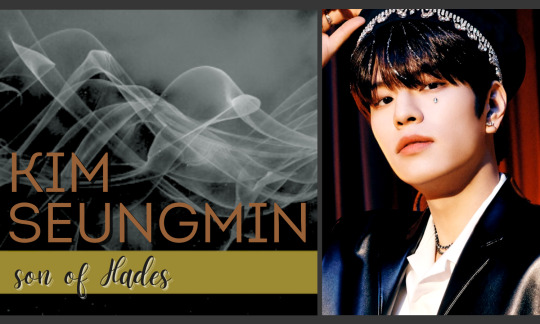
We have a new citizen in Mount Phoenix:
Kim Seungmin, a 22 year old son of Hades. He is a librarian at Phoenix Library & Museum.
FC NAME/GROUP: Kim Seungmin / Stray Kids CHARACTER NAME: Kim Seungmin AGE/DATE OF BIRTH: 22 / September 22nd, 2000 PLACE OF BIRTH: Seoul, South Korea OCCUPATION: Librarian at the Phoenix Library & Museum HEIGHT: 5’10 WEIGHT: 123lbs DEFINING FEATURES:
He has an aura of quiet and calm radiating around him
He has a sharp and calculating gaze that can sometimes feel like he’s seeing right through you, that he can see who you are at your core with just a glance
He wears glasses sometimes
Piercings: Three in his left ear (2 lobe, 1 cartilage), three in his right ear (1 lobe, 2 cartilage).
PERSONALITY: Seungmin is… quiet. He used to talk more, be more open, friendly, and comfortable interacting with people. But after a few years of being “too” friendly and “too” open, saying things some people would rather not hear or things they refused to believe and responding with hostility or anger– Seungmin just stopped talking and interacting unless he was spoken to first. He also just… dropped the friendliness too.
Instead of friendly or open remarks, Seungmin started to respond with more bluntness and an undercurrent of an extremely sharp tongue. He takes no shit from people and can be rather sarcastic and to the point in a way that leaves no room for questions.
He’s not unfriendly persay, just very hard to get to know. He can be a bit of a savage as well, laying into people with biting comments if they trigger his defenses and unwillingness to talk more openly.
He says what he thinks and will not back down when his opinions are challenged, he argues his point to be sure he’s understood and to show he’s not a weak person. He’s not mean or nasty, just sharp because he learned that’s the only way to talk to people sometimes. He has a good heart deep down, his care for people or creatures who truly matter to him bringing out a much gentler nature. It takes work to get behind all his defenses but once you do you have one of the most loyal and true to heart people you could ever meet. He’s fiercely loyal to his friends, protective and caring.
If you betray him however, break that trust you gained after all the work you had to put into getting through all those layers he has built up… you better run because hell hath no fury like a child of hades scorned.
HISTORY: As a baby, Seungmin had been left alone in a ditch shivering and cold with a threadbare blanket wrapped around his small body. He’d been found later, nearly frozen to death and quickly brought to a community home for abandoned children. Everything was fine until he was old enough to talk, often pointing out how people had things following them. ‘Shadows’ that seemed to want to speak with them.
For some, they realized they were deceased relatives.
Often, they were far too creeped out by that fact to really understand so rather than talking to Seungmin about it- they punished him. They said nasty things and often claimed that was the reason he’d never be adopted out. After all that- Seungmin stopped. He stopped talking about the shadows and instead turned to reading. He read a lot, consumed a lot of books of all kinds and learned languages for fun.
He never did get adopted out either, his past talk of shadows tarnishing his ‘adoptability’ for people in the years that followed.
Soon enough, the moment he was turning eighteen had come and he ended up on the streets. For most places when a child ages out of the system, said child was supposed to be given a starting point of sorts. A small apartment and a job. Seungmin was not given that and instead spent his eighteenth birthday trying to find a dry and comfortable enough area to shelter from the oncoming cold.
Two days later, Seungmin met a small pack of stray dogs and upon observing some odd behaviors from them he chanced asking them if they knew a good place to shelter from the cold. To his surprise, the dogs began leading him to a place he could get out of the cold.
It was a stray animal haven, and there he met the first ever parental figure he’d ever had. A kindly woman with a connection between her and her strays that surpassed all expectations. It was there he was given a bed, a roof to sleep under, and food to eat. He stayed there for a few years, learning what he could to help the woman and her strays up until one day he was approached by a Spirit. For most of his life he’d only known them as shadows but this time he could see the spirit so clearly he knew what it was. The spirit had a connection with the woman he was staying with and though he was hesitant… Once again Seungmin decided to try becoming a mediator between a living person and their deceased connection.
This time he received positivity, a thank you. Instead of fear and rejection.
After that, the woman told him about a place. A place where he could find answers and a place where he’d be welcomed by others like himself (others like her as well, though she never sought it out as she never needed it as much as others do). She told him her suspicions about who his father might be, as it had to be Hades. There was no other reason why he could see and interact with spirits like he could as well as have the dogs interact with him in the ways they do. Like he was their leader that they would follow without question.
She urged him to travel to Mount Phoenix, a place where he might find more answers about himself and what he could do. And so, with clear instructions on how to get there- Seungmin packed up his few belongings, promised to visit the kindly woman when he could now and then, and made his way to Mount Phoenix to see what awaited him there.
PANTHEON: Greek CHILD OF: Hades POWERS:
The Ability to Sense, Summon, and Speak to Ghosts
Dogs obey him without question
STRENGTHS:
He will not waver in the face of unfairness or adversity.
He knows how to protect himself and others.
He can easily tell when someone is bullshitting him. He learned how to pay attention to people’s nervous tics and generalized habits from a very young age.
WEAKNESSES:
His sharp tongue and blunt nature makes him difficult to approach.
He doesn’t give chances to people very often. If someone fucks up once, they don’t get another chance.
He has difficulty opening up to others and trusting people too deeply. He’s spent too long building up his defenses to keep himself safe and unhurt.
5 notes
·
View notes
Text
How To Read Dog Body Language

Dog body language involves a series of unique methods for communicating emotions and intentions. It can be quite different from how humans communicate.
A lot of canine communication consists of barks, whines, and growls, so it’s important to know what dog sounds mean. More often, though, dogs rely on nonverbal body language. That can lead to plenty of human-dog misunderstandings. Sometimes, dog body language is simply unfamiliar (after all, people don’t have tails). At other times, it’s in direct contrast with what that same signal means to a human, such as with yawning or looking away. To better communicate with your canine companion, learn some tips on reading dog body language.

Tail Wagging
Tail wagging seems like an obvious body language signal. If a dog’s tail is wagging, the dog is happy, right? Wrong. People misinterpret this signal all the time. All a wagging tail means is that the dog is emotionally aroused. It could be excitement, but it could be frustration or worse. To interpret the dog’s emotions and intentions, look at the speed and direction of the wag as well as the position of the tail.
Basically, the faster the wag, the more aroused the dog. Think about those long, slow, side-to-side tail sweeps your dog makes when greeting you — the type that wag the dog’s whole body. That’s a relaxed dog. A faster twitch-like wag indicates a higher level of arousal and possibly in a negative way. Think of a guard dog on alert.
The direction of the wag may hold clues as well. A recent study on tail-wagging showed that dogs tend to wag more to the right when they feel positive about something, like interacting with their owner. Tails wagged more to the left when dogs faced something negative. Then, there’s the helicopter tail wag where the dog’s tail spins in a circle. Without question, that’s a happy wag. You’ll usually see it when a dog is greeting a beloved person.
Finally, the position of the dog’s tail relative to the ground holds important clues about their emotional state. Essentially, the higher the tail, the more assertive the dog. Dogs with their tails pointing down to the ground or even tucked between their legs are feeling fear and stress. Dogs with their tails held up like a flag are feeling confident, perhaps even aggressive. Relaxed dogs hold their tails in a neutral position, but neutral depends on the breed. Some breeds, like Chow Chows, have tails that naturally curl over their backs whereas breeds like the Italian Greyhound have a very low neutral tail position. If you get to know your dog’s neutral tail position, you will more quickly recognize when their emotions have shifted.
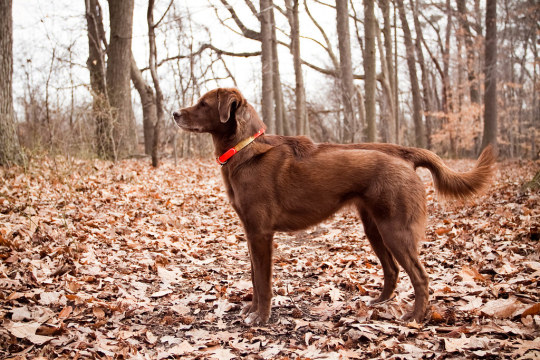
Raised Hackles
When a dog’s hackles are raised, it means the hair along their back is standing up. Technically called piloerection, the fur can fluff up across the shoulders or down the back and all the way to the tail. This is a definite sign that the dog is aroused, but not necessarily in a negative way. The dog might be upset or stressed but could also be excited or intensely interested in something. It’s often an involuntary reaction, like goosebumps in people.
Posture
A dog’s weight distribution can tell a lot about mood and intention. Consider a cowering dog that is hunched toward the ground. That’s a sign of fear or stress. The dog may be trying to get away from something and the posture makes the dog appear smaller. In other words, it says, “I mean no harm.” The extreme of this posture is a dog that rolls onto their back exposing the belly. This may look like a dog soliciting a belly rub, and in a relaxed dog, it often is. But it can actually be a sign of considerable stress and anxiety. The dog may even urinate a little in appeasement.
The opposite posture is a dog with his or her weight shifted forward. This dog is trying to get closer to something. This might simply indicate the dog’s interest. But it could also indicate offensive intentions, particularly paired with other aggressive body language cues like a twitching tail held high. In this case, the dog is trying to appear larger.
An easy-to-read aspect of dog body language is the play bow. This is when dogs place their chest on the ground with their rump in the air. As the name implies, it’s used to initiate play with other dogs and even with people.
A less easily understood signal is the paw raise. In the pointing breeds like the English Setter, the paw raise is part of pointing behavior where the dog indicates nearby prey. But outside of this context, a raised paw often indicates a dog is uncertain about a situation or perhaps feels a bit insecure.

Facial Expressions
Dogs have similar facial features as people, but they don’t use them in the same way. Consider yawning. People yawn when they’re tired or bored, but dogs yawn when they’re stressed. Dogs use yawning to calm themselves in tense situations and to calm others, including their owners. She suggests yawning at your dog to provide comfort at stressful moments like a vet visit. But don’t be surprised if your dog yawns back. Just as yawning is contagious in people, dogs can “catch” yawns too.
Lip-licking is another bit of dog body language that people often misinterpret. Just like people, dogs will lick their lips after a delicious meal, but they will also do it when they feel anxious. Sometimes the tongue flick is so quick it’s tricky to notice. Your dog isn’t signaling a desire to lick your face, but rather discomfort with a given situation.
The most confusing facial expression is smiling. Yes, some dogs smile, and if you’re not familiar with the expression it can look terrifying. Usually, when dogs bare their teeth, it serves as a warning, as if they’re saying, “Look at my weapons.” It’s hard to mistake the aggressive intention of a snarl, especially when it’s paired with a menacing growl. The corners of the dog’s lips form the shape of a C and the front teeth are fully displayed.
Smiling dogs also display their front teeth, but the meaning is the complete opposite. Also known as a submissive grin, this expression is often found on a happy dog with a loose and wiggly posture. The dog’s overall attitude says, “Hello, I come in peace.”

Eyes
You can learn a lot about your dog’s internal state by looking at the eyes. First, a dog’s eyes can be soft or hard. Soft eyes have relaxed lids and sometimes look like the dog is squinting. They indicate the dog is calm or happy. The opposite is hard eyes where the eyes seem to go cold. These indicate a negative state of mind, and you’ll know them when you see them. The dog might be guarding a toy or feeling aggressive. A hard stare, where the dog looks intently at something, especially for a long time, usually signals a threat.
Eye contact is an important signal for dogs. Just as the hard stare can be a precursor to aggression, looking away is meant to calm a situation. When dogs feel stressed, they will pointedly look away and avoid eye contact. People often interpret this as their dog ignoring them or being stubborn, but the dog is expressing discomfort.
The whites of the eyes are another key indicator. Known as “whale eye”, when a dog shows the whites of the eyes, it’s a signal they are feeling anxious or stressed in a situation. You might see them when you make your dog uncomfortable, like when you pat your dog on the head, or when they’re afraid someone will steal a bone or toy.
Deciphering Dog Body Language
None of these dog body language signals act alone. They are all part of a package. So, when you read a dog’s communication, look at every signal the dog is using from the tail height to the eye shape. Your dog is “talking” to you all the time. If you learn what your dog is saying, you will develop a deeper bond of trust and respect. Plus, your newfound understanding of your dog’s emotional state will help you predict your dog’s behavior and prevent problems before they occur.
116 notes
·
View notes
Text
Have you ever wondered how well your furry friend really understands you? As it turns out, dogs are incredibly skilled at reading human body language and facial expressions, even better than some other animals such as chimpanzees and bonobos!
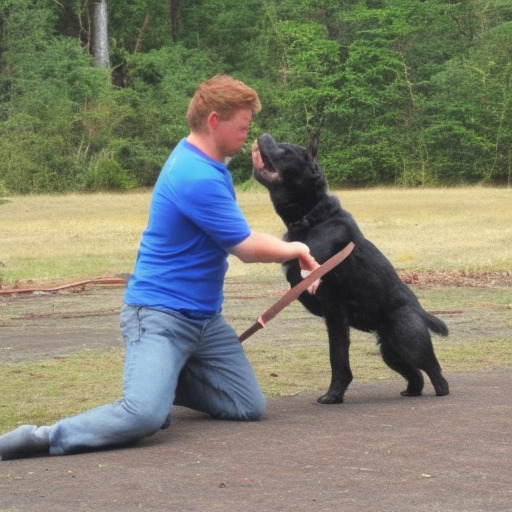
Research has shown that dogs are able to interpret human cues and understand our intentions, emotions, and even some of our words. For example, when we point to an object, dogs are able to follow our gesture and look in the direction we're indicating. Similarly, they're able to recognize and respond to a variety of human emotions, such as happiness, anger, and fear, and adjust their behavior accordingly.
One of the reasons why dogs are so good at understanding us is because they've been selectively bred for thousands of years to work alongside humans. From hunting and herding to providing companionship and assistance, dogs have played an important role in human society and have evolved to be attuned to our needs and behaviors.
In addition, dogs are highly social animals that rely on communication to interact with their pack mates. They use a variety of body postures, vocalizations, and scents to convey information and establish social hierarchies. When interacting with humans, dogs may use these same communication methods to signal their intentions and respond to our cues.
Of course, every dog is unique and may have their own individual strengths and weaknesses when it comes to understanding human behavior. Some dogs may be particularly skilled at reading facial expressions, while others may excel at following verbal commands. However, with proper training and socialization, most dogs can learn to understand and respond to a wide range of human cues.
Create a stronger bond with your furry friend and enjoy a happier, more fulfilling life together - start training with us now!"
So the next time you're interacting with your furry friend, remember that they may be picking up on more than you realize. By being aware of your own body language and cues, and using positive reinforcement training techniques, you can strengthen your bond with your dog and improve your communication skills. After all, a well-trained dog is not only a joy to be around, but also a true companion that understands you like no other
5 notes
·
View notes
Text
Is it time to tear ANOTHER Dhar Mann video to shreds? YOU BET.
I've been sitting on this one for a bit because I wanted to make sure I talk about this tactfully. The subject of parents abandoning their disabled children is a very touchy one.
Parents abandoning their disabled children simply for being disabled is way too common. Like, I understand that not everyone has the resources to care for a disabled child (which is why you reach out for help, and why people like me, who work with disabled people, exist), but it doesn't mean you just walk out of their life. There are exceptions, like if you truly didn't want children or something like that, but just flat-out walking out of your kid's life BECAUSE they're disabled is fucked up.
I know someone personally whose biological mother abandoned her when she was born. Why? Because she's disabled. Physically, and mentally, to a point. I work with this woman on a daily basis. I don't really know WHY exactly her biological mother abandoned her, but I do know that her being disabled was part of it. It's sad. It doesn't affect her, thankfully. I'm happy that she's got her biological dad, her brother, and another maternal figure in her life, at least.
ANYWAYS. Before we get to the topic at hand, I need to put an obligatory trigger warning, like I do with EVERY Dhar Mann post:
This post will be talking about parents abandoning their disabled children simply for being disabled, treating disabilities like they're tragedies (in this case, we're talking about autism...again), divorce, and some SPICY ableist bullshit from an allistic (nonautistic) PIECE OF SHIT.
If any of this triggers you or makes you uncomfortable in any way, you don't have to read this post. This isn't worth putting yourself in a bad state mentally. I would never ask for any of you to put yourselves in that position all for a post. Put your mental health and well-being first. Consume media that sparks joy for you.
As far as my response goes, it's definitely more calm than normal. Funny....since this video is about autism spectrum disorder again. (Third time's the charm, huh, Dhar Mann? NOT.)
LET'S FUCKING GET IT.
The video starts off with these two parents (Gwen and Allen) in a psychologist's office. The psychologist tells the parents that their son (Chance) is autistic, and she tries to explain what autism is to the parents, but Allen cuts her off. Why? Because he teaches at a prestigious university, so he AUTOMATICALLY knows what autism is from that fact alone.
Um, excuse me? Just because you're a teacher at a prestigious university, it doesn't mean you're an expert in everything. It doesn't make you an expert in ASD or anything like that. Unless you SPECIALIZE in that area. Even then, shut the fuck up. The people who know about being autistic are AUTISTIC PEOPLE THEMSELVES! SHOCKER.
Hey, Dhar Mann! QUIT WITH THE VIDEOS ABOUT AUTISTIC LITTLE WHITE BOYS AND YOUNG WHITE AUTISTIC CISHET MEN! I'M SICK AND TIRED OF IT. It's annoying, ignorant, and it feels like you're doing this on purpose at this point to piss people off. If you're so uninformed about autism in women and girls, FUCKING ASK AUTISTIC WOMEN AND GIRLS! DO BETTER RESEARCH THAT DOESN'T INVOLVE AUTISM SPEAKS. The Autism Self Advocacy Network (ASAN) and the Autistic Women and Nonbinary People Network (AWN) are great organizations to go to for any kind of research on ASD in women and girls. STOP GOING OFF OF THE BRAINS OF AUTISTIC WHITE BOYS AND AUTISTIC WHITE MEN.
I don't feel I need to go too deep into the fact that autistic women, autistic girls, autistic nonbinary people, autistic BIPOC, autistic AAPI, autistic LGBT people, autistic teenagers, and autistic adults exist. Y'all already know.

Gwen asks the psychologist if that means Chance isn't healthy. (I understand not knowing about autism, but don't treat it like it's a terminal illness. Please.) The psychologist tells her that Chance is fine, but he just learns differently and might need more support compared to his peers.
Yeah, autism can affect how you learn about certain things (limited and repetitive patterns), but there are other disabilities that can affect learning as well. Like how dyslexia can affect your ability to read, dyspraxia can affect your ability to do math, and Attention Deficit Hyperactivity Disorder (ADHD) can affect your ability to focus or on impulse control. Autism affects how your brain is developed, it affects you socially, behaviorally, and how you communicate.
Allen is upset, says that he can't have a son "with a learning disability" (ASD is a neurological disability, not necessarily a learning disability), and treats Chance like he's stupid for being autistic. Gwen tells her husband that autism doesn't make you any less intelligent, WHICH IS SO FUCKING TRUE. ABSOLUTE FACTS. I was totally with her until she began that little monologue with "Just because a person HAS autism". SAY "JUST BECAUSE A PERSON'S AUTISTIC" INSTEAD! IT'S NOT HARD. PERSON FIRST LANGUAGE ISN'T WHAT EVERY DISABLED PERSON PREFERS. Allen says that "they could have another kid" and "put Chance up for adoption". Gwen obviously wasn't down with that. Allen gives his wife an ultimatum that it's either HIM or their son Chance. Gwen says that she can't choose between the two, but she will stand by her autistic son. Allen gets up and leaves the office, saying he wants a divorce.
Years pass by, Gwen is single and taking care of her autistic son Chance, and Allen has a new life with a ✨perfect son✨ (Samuel). He never mentions the son HE abandoned (Chance). He's completely forgotten about Gwen and Chance. (YOU OWE SO MUCH CHILD SUPPORT, ALLEN.)

Hey, Allen, how much do you wanna bet that your ✨perfect son✨ Samuel is autistic too?
There's the SATs, they're announcing a winner, and guess who it is? IT'S OBVIOUSLY CHANCE, OF COURSE. He's got the highest score in the country, with Samuel in second place. Allen is PISSED.
Chance gives a speech about how his mom really helped him, he struggled with autism, how Allen LITERALLY ABANDONED HIM, and THE CROWD GOES FUCKING WILD. Samuel, instead of being a sore loser, APPLAUDS FOR CHANCE. Stay humble, Sam.


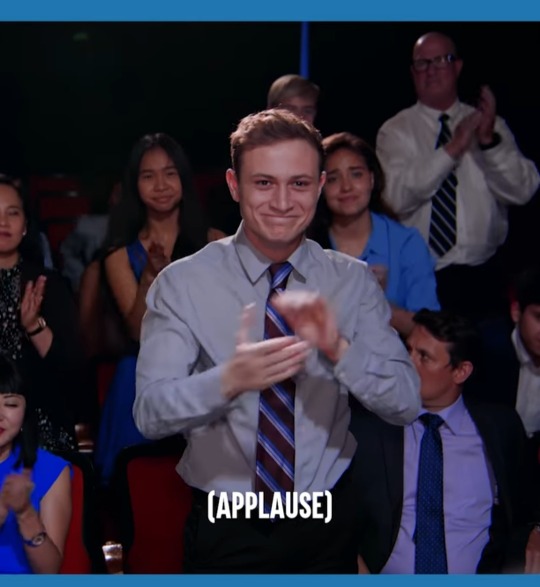
My thoughts on the video? If you cannot tell by my tone throughout this post, IT WAS DOG SHIT. This video was insensitive to the true reality of parents abandoning their disabled children just because they're disabled. What do I expect from Dhar Mann at this point?
Here's my response to his video below. Don't worry, I will fully type out my response soon for anyone who cannot read the screenshots easily. It's a lot easier for me to do that on the desktop site than it is for me to do it on my phone.

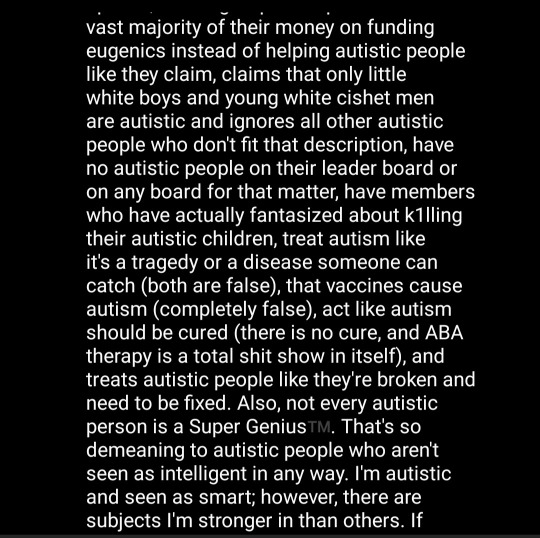
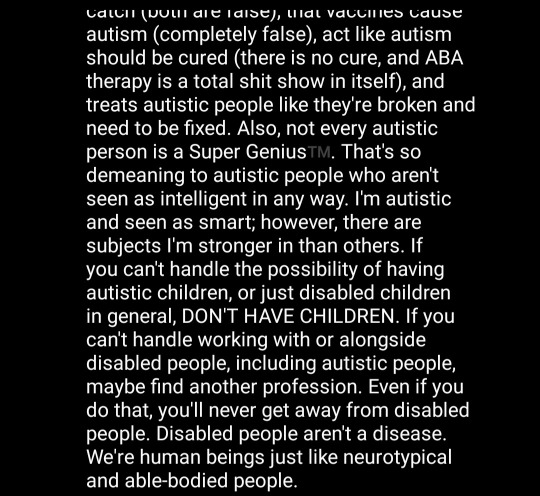
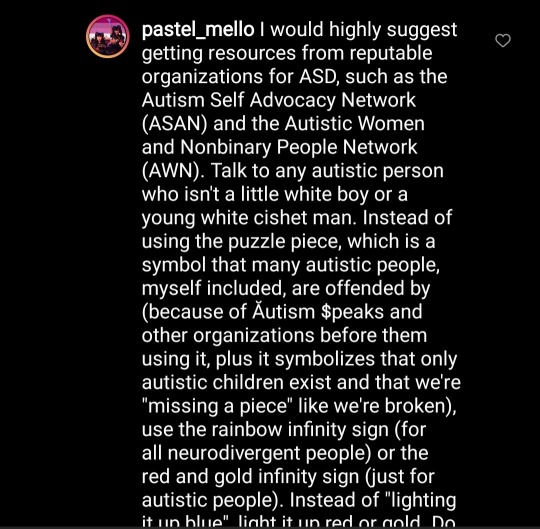
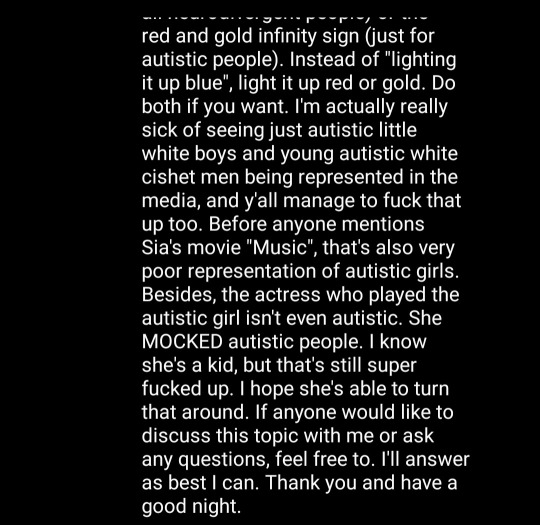
For anyone who can’t read my response, I’m typing it out for you. Like I said, it’s easier for me to type it out on the desktop site than it is for me to type it out on my phone. It’s a real royal pain in the ass. But because I’m trying to make my posts easier to read for people, I’m doing this anyway. /lighthearted
First, second, and third screenshots (broken up into paragraphs):
Hey, listen, I appreciate the message you’re trying to go for, but can you please stop putting autistic people into a box? Can you stop treating being autistic like it’s a tragedy? Not every single autistic person is a little white boy in elementary school who’s considered “wild and unruly” or “super quiet and makes no friends”, nor are they a young white cishet man who’s a super genius or is how Chris Chan was before she came out as trans. (For anyone who doesn’t know about Chris Chan, there are many documentaries people have made on YouTube, and I highly recommend Geno Samuel’s docuseries, if you’re really interested in learning about Chris Chan.)
Autistic women, girls, nonbinary people, BIPOC, APPI, LGBT people, teenagers, and adults all exist too.
It’s very apparent now that you get your resources from Autism $peaks, a hate group that spends the vast majority of their money on funding eugenics instead of helping autistic people like they claim, claims that only little white boys and young white cishet men are autistic and ignores all other autistic people who don’t fit that description, have no autistic people on their leader board or on any board for that matter, have members who have actually fantasized about k1lling their autistic children, treat autism like it’s a tragedy or a disease someone can catch (completely false), act like autism should be cured (there is no cure, and ABA therapy is a total shit show in itself), and treats autistic people like they’re broken and need to be fixed. Also, not every autistic person is a Super Genius(tm). That’s so demeaning to autistic people who aren’t seen as intelligent in any way. I’m autistic and seen as smart; however, there are subjects I’m stronger in than others.
If you can’t handle the possibility of having autistic children, or just disabled children in general, DON’T HAVE CHILDREN. If you can’t handle working with or alongside disabled people, including autistic people, maybe find a different profession. Even if you do that, you’ll never get away from disabled people. Disabled people aren’t a disease. We’re human beings just like neurotypical and able-bodied people.
Fourth and fifth screenshots (broken up into paragraphs):
I would highly suggest getting resources from reputable organizations for ASD, such as the Autism Self Advocacy Network (ASAN) and the Autistic Women and Nonbinary People Network (AWN). Talk to any autistic person who isn’t a little white boy or a young white cishet man.
Instead of using the puzzle piece, which is a symbol that many autistic people, myself included, are offended by (because of Autism $peaks and other organizations before them using it, plus it symbolizes that only autistic children exist and that we’re “missing a piece” like we’re broken), use the rainbow infinity sign (for all neurodivergent people) or the red and gold infinity sign (just for autistic people). Instead of “lighting it up blue”, light it up red or gold. Do both if you want.
I’m actually really sick and tired of seeing just autistic little white boys and young autistic white cishet men being represented in the media, and y’all manage to fuck that up too.
Before anyone mentions Sia’s movie “Music”, that’s also very poor representation of autistic girls. Besides, the actress who played the autistic girl isn’t even autistic. She MOCKED autistic people. I know she’s a kid, but that’s still super fucked up. I hope she’s able to turn that around.
If anyone would like to discuss this topic with me or ask any questions, feel free to. I’ll answer as best as I can. Thank you and have a good night.
Before I get attacked for mentioning Chris Chan in my response, I bring up Chris Chan because allistic people think that every autistic person is like her (especially before she came out as trans). That person is part of why I wasn't open about being autistic or talking about my diagnosis until this year. I didn't want to be grouped up with Chris Chan because I do have very similar interests to her, I've been seen as cringey for having said interests, and just the way Chris treated autistic people who were formerly diagnosed with A$p3rg3r$ $yndr0m3 (like I was) really made me feel even more alienated.
Also, S1a supports A$ (Autism $p3aks). She's not a very good person to support. Some of her music is good, but her as a person....no. Her movie "Music" was gross, from what I've read about it and seen pictures of.
If you've read this far, thank you so much!
#mello speaks#dhar mann#dhar mann talk#dhar mann will live to regret his decision to make these fucked up cringe videos#dhar mann will live to regret his decision uwu#dhar mann is a piece of human garbage#please stop supporting dhar mann#autism isn't a tragedy#we need better representation for autistic people who aren't little white boys or young white cishet men#dhar mann is a cringe ass nae nae baby#tw abandonment#tw ableism#cw sia mention#cw chris chan mention#tw dhar mann
51 notes
·
View notes
Text
Intruder Alert
A/N: This fic is based on an ask by@multi-muse-transect. The ask was for a Peggy/Nat AU in which Natasha is taken in by Wong after he defeats Drykov. While she is studying as his apprentice, Nat sees Peggy working out. I have not seen The Black Widow. I hope this somewhat meets the request. Enjoy.
Natasha Romanoff still burned with the imprint of her former training. Her Master, Drykov was a viscous taskmaster and one whom distributed brutal punishment on those who did not meet his impossible standards. Nat did not fail, but she saw plenty who did, plenty who disappeared and were never seen or spoken of again. When Wong came to Red Room, many of the girls scattered, taking the opportunity to escape, if they had the nerve. Natasha watched. She watched as the General threw everything he had at Wong. But, the peaceful looking Asian was not an ordinary man. By some power that Natasha did not understand, Wong defeated Drykov.
When the battle was over, such as it was, the man looked at her intently. She returned his scrutiny with curiosity of her own. He approached her with open hands and smile with which the young assassin could find no fault. She was looking. Hard.
“Do you want to leave this place?” he asked, like he was order lunch. “I do not think there is anything left here for you.”
“I'm supposed to follow a strange man though a glowing golden portal and hope it all turns out well for me?” Natasha answered, coldly.
“Better than a Russian Gulag or being hunted like a dog for the sake of deniability,” the Asian answered, softly, but directly.
“If we get along,” the redhead offered. “And, I'm not saying we will. I want you to teach me what you were doing. The golden patterns were...beautiful. The power in them is obviously strong.”
“It is possible that this could be done. If we get along. As you know, students get the grunt work. Are you prepared to keep working? I promise that learning form me will be nothing like this place.”
“Let's go,” Natasha said, ready to leave with the clothes on her back. “There is nothing here for me.
She watched as the portly man seemed to spin a web of light, which opened into a larger circle and showed an empty alley on the other side. Without a glance toward her, he walked through.
She stood still; considering he empty alley, the oddly content man, and potential to learning a power beyond her understanding.
“Are you coming?” he asked from the other side of the portal. His hands clasped behind his back. “The window will close momentarily.”
“Who are you?” Natasha asked, her heart rate rising.
“My name is Wong.”
“Who are you, really?” she pressed. “You will find out soon enough. JUMP! NOW!
Natasha jumped as the portal closed around her.
*****
The house in New York was old, but comfortable. Stylish, in a museum kind of way. Nat found its timeless, multicultural decorations relaxing. It was inviting in a way the Red Room complex was spartan and lifeless. Nat was also pleased that she and Wong had worked out a teacher-student relationship that was both challenging and rewarding. His positive reinforcement was a refreshing change from Drykov, but also an initial hurdle as Nat knew she was exhibiting the behavior of an abused child. It took some time for each of them to learn to trust each other. It was coming, slowly, but surely.
After three months of introductory lessons, Wong decided to give her something a little more complex. He handed her a small leather bound book with ornate decoration on the front and back cover. It could not have been more than 20 pages long. Opening the volume, she found child like illustrations and words in a language she could not read. “Study this for this afternoon. Talk to me about what you have discovered at dinner.
Nat was not one to retreat from a challenge. Sitting at table on in the library, she started to 'read'. The words meant nothing, but the pictures...
Two hours later, Nat was knocked from her reverie by the faint sound of grunting an exertion. It wasn't Wong, or anyone else she had met at the House. She could hear the unmistakable sound of fists pounding leather. Kicking too. Rising from her chair she was was surprised to see golden sparks dissipate about her. What the hell? Even the sparks couldn't keep her from following the sounds of someone beating the shit of a hanging bag. Following the exhilarating sounds lead her to a wide, carpeted stairwell leading down. Of course its coming from the gym, dummy.
Making her way down the stairs and through a longer than normal corridor, Nat pulled up short before entering Wong's work out room. Peering into the room, but remaining out of sight, Nat was amazed at what she saw. The person beating on the bag was a woman. A giant woman. She must have been...over six feet tall. Her shoulders, glistening with sweat, were broad and muscled. Her entire body was broad and muscled. In her boxing stance, Nat could see the definition in her calves, thighs, and abs. The skin tight exercise pants left little to the imagination. The woman had a magnificently tight set of glutes. It was a nice ass. Who was she fooling? Despite herself, Nat found her eyes glued to the mystery woman. For the time being she felt that observing would be the best course of action. She wished the woman would turn around so she could get a look at the rest of her, but the Amazon was positioned to only show her back.
“How long are you going to stand there and watch?” the brown haired woman asked.
For the second time in a few short minutes, Nat had been caught off guard. Lost in thought. It was unforgivable. Drykov would have beaten her and thrown her naked into a cell the size of broom closet. That was then, though. This was now. Now, was a beautiful, muscle bound woman calling her out for staring. Natasha turned on the ice.
“I was waiting to get a good look at our intruder,” she said, flatly.
“Well,” the other woman said, turning to face Natasha. “Am I good looking?"
The former Red Room assassin, trained in all manner of self control and deadly precision, blinked. Dark brown eyes, strong jaw, aquiline nose, full, luscious lips, and large breasts, that seemed to strain against her loose grey tank top.
“Passable,” Nat said, without emotion. You thought luscious lips and big boobs, you big liar!Natasha felt like she needed to leave. She wasn't thinking clearly. This woman was affecting her in a way that she couldn't control. At first sight, her training was gone and she was succumbing to baser instincts. She's a hot athlete who started flirting with you immediately.
“Better than I get from the guys on the construction crew,” the larger woman said. “I think they're scared and don't know what to do with someone who could take them in a fight.”
“Sorry to hear that,” Natasha said. “Can't be easy taking shit from guys like that.”
“They are harmless. Literally. None of the them could hurt me.”
“Nasty names can't be easy every day,” Natasha said, moving not so stealthily toward the chair where the woman's bag lay open and white towel hung over the edge. “Plus, I'm not sure sure such names are entirely accurate.”
“Changing your tune that soon?” the other woman challenged. “I didn't come here to to be hit on by little girls. I came to work out.”
“I am not a little girl and I am hardly hitting on you,” piqued by the boxer's audacity.
“That drool at the edge of your mouth says otherwise?” the intruder continued, brazenly.
“I don't drool,” Nat responded, harshly, her self control eroding further. “Who are you? I need a name to give the police.”
“I'm Peggy, and there's no need to call the police. They would come, find you unconscious, and I would be in the wind.”
This woman, Peggy, was instigating her. Why? Perhaps she thinks your cute too. Did she already know who Natasha was? Was she an associate of Wong's? Or, did she simply like pushing buttons?
“If that was a threat, it was lost on me,” Nat said, with confident cool. “I can take care of myself. I'm sure you've heard the phrase: the bigger they are, the harder they fall?”
The larger woman's brown eyes gleamed with mirth. Placing on gloved hand on her hip, she brought the other to her mouth in failed attempt to stifle a laugh.
“Did you really just say that?” Peggy said, rounding out her chuckle. “Trained assassins should be able to make better threats than that. Seriously.”
Another figurative right hook to Natasha's ego sent her reeling. “Do you need a towel? You're sweating?” That's right. Offer to wipe down her sweaty muscles while you try to recover from her owning you from the moment you saw her.
“Sure, Natasha,” Peggy said, taking the offered towel and beginning to wipe herself off. “Since you mentioned it, if I fell, which is unlikely, I would make every effort to fall on top of you so there would be no clear victor.”
Nat was sure she was hypnotized. She was a Red Room assassin and a Sorcerer's apprentice. Who did this Amazonian street thug think she was? This is getting old. You are not hypnotized. You are hot for her at first sight and just won't admit it.
“Who's Victor?” Nat said, emerging form her inner argument. “And, how do you know who I am?”
“Are you okay?” Peggy said, coming toward her. The taller woman, pulled her boxing gloves off and tossed them to the floor. She turned her hand knuckles out and reached toward the assassin's forehead. Nat blocked the strong forearm aside before the hand could touch her.
Raising her hands in surrender, Peggy said. “I'm not going to hurt you. I was trying to check your temperature. You seem out of sorts.”
“How would you know what sort I am?” Nat said, too harshly.
“You're sweating,” Peggy said. “Your face is flush. You offered me a towel. I didn't see that coming.”
“You're sweating!” Nat exclaimed, causing a small burst of golden sparks to shoot from her temples.
“Whoa,” Peggy said, shocked, as the sorcerer's assassin collapsed toward her.
Peggy caught the younger read head and scooped her up into her large arms.
“What has Wong gone and done this time,” Peggy said, as she walked Natasha up the stairs in search of her teacher.
#peggy/nat#peggy x natasha#Peggy Carter#Captain Carter#Natasha Romanoff#wong#marvel fanfiction#marvel mcu#fanfic#What If...?#what if...? fan fiction
26 notes
·
View notes